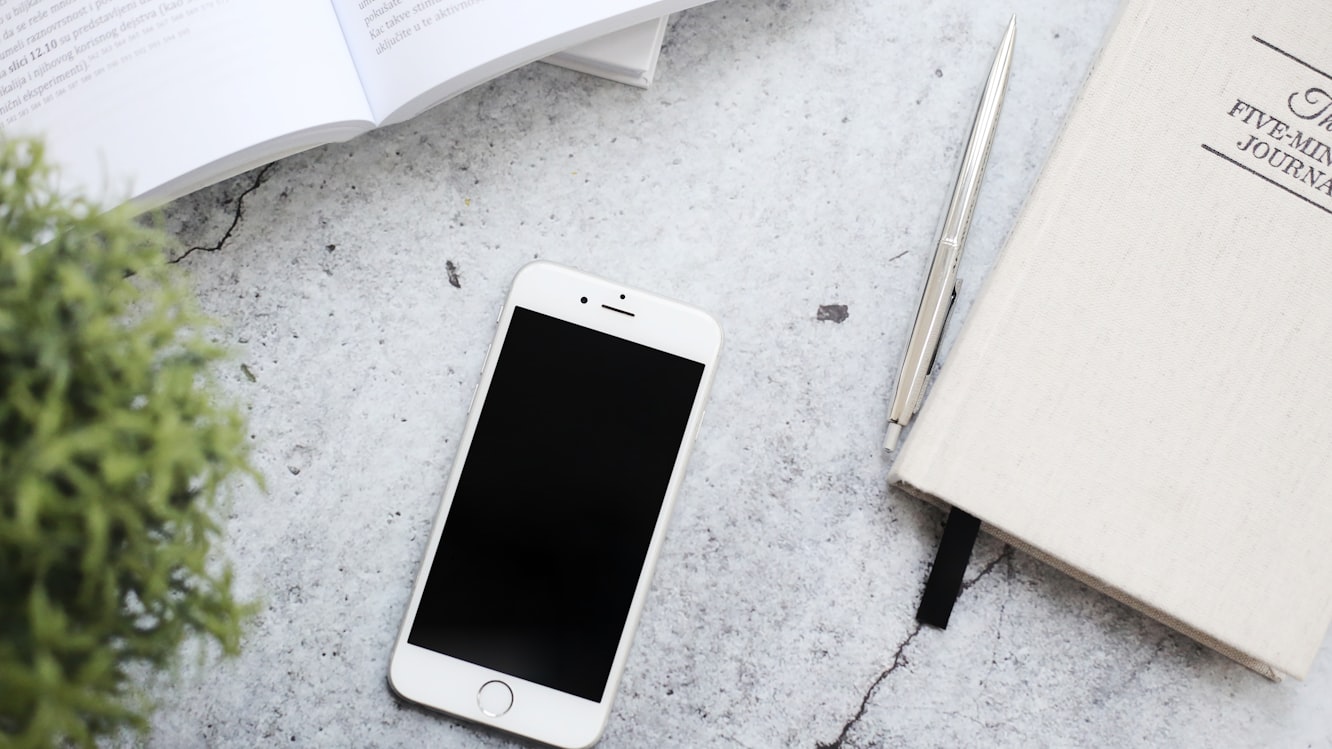Key Takeaways
- Usage-based insurance is a cost-saving innovation
- GPS tracking helps dynamically alter insurance costs according to risk assessment
- More advances need to be made for pay-as-you-go phone insurance to be common

Imagine you could only pay for insurance when it’s needed. Usage-based insurance is a revolutionary coverage type in the auto insurance world, and it’s changing the game for other insurers as well. A usage tracker would check when you’re traveling or using your phone. If you’re just sitting on your couch, the tracker will lower your insurance premium accordingly.
Usage-based phone insurance is an exciting innovation that can save consumers money. But what’s the catch? Does it benefit insurers? Let’s go over how pay-as-you-go insurance works and how it can disrupt the phone insurance industry.
What is Pay-as-You-Use Phone Insurance?
Usage-based insurance is a new, dynamic type of insurance that adjusts coverage based on real-time statistics. It is mainly used in the auto insurance industry, where it’s common to leverage GPS tracking for better vehicle risk assessments and claims processing. The auto insurance telematics help the policy calculate its premium based on factors such as:
- Usage frequency
- Location
- Risk profile
Usage-based phone insurance is also similar to health trackers in health insurance. Healthcare devices can be worn and apps can be used to monitor the user’s health.
In comparison with traditional one-size-fits-all phone insurance, usage-based phone insurance has a more tailored pricing system. It feels economically better to purchase because you know it will only really cost you when the risks are high enough to warrant phone insurance.
At the same time, usage-based phone insurance is still rare. The policies might not offer you as many customization options as standard phone insurance. Currently, the best phone policies already offer plenty of perks and member benefits, such as one-day replacement, multi-device coverage, and assistance hotlines.

How Usage Tracking Works
Telematics refers to the tracking of data points using GPS technology. Usage tracking can collect data points such as:
- Screen time and app categories (e.g. work, gaming, streaming)
- Geolocation patterns (high-risk theft areas vs safe environments)
- Frequency of device use (heavy vs. light users)
Telematics is used to quickly and efficiently analyze risk. AI is often used to help with risk assessment. If you’ve traveled to a densely populated tourist area infamous for pickpockets, insurance will be more expensive. If you’re sitting in bed, insurance will be cheaper.
An issue with usage-based insurance policies is user privacy and consent. Essentially, the insurance company would know where you are. In 2025, people are more aware than ever that their data is being stored and sold. It is important for phone insurers to safeguard policyholder privacy and handle user consent concerns carefully.

Benefits for Consumers
Cost savings for careful users
Phone insurance currently costs around $8 to $15 a month, depending on your chosen policy. But this pricing accounts for any risks you might encounter. Phone insurers assume a default, moderate to high risk and expect phone owners to lose or damage their phone. This means that even if you’re not using your phone in risky situations for half of the year, the monthly premium will still cost the same.
If you are careful with your phone and are not prone to accidents or losing your devices, usage-based phone insurance would be a great deal. It could help you save money on phone insurance without altering your lifestyle. You would be getting phone insurance that aligns with your risk.
Fairer pricing
With usage-based phone insurance, you get to pay based on your actual behavior, not phone insurance premium averages. Essentially, it would work similarly to how you pay for other products and services, such as electricity. The more electricity you use in a month, the more you pay. The more risk you encounter in a month, the more expensive the insurance premium.
In certain cases, however, pay-as-you-use phone insurance may be more expensive. This would happen if you are an adventure traveler who is constantly using your phone in remote or dangerous areas. These locations and activities would increase the risk to your phone, thus raising the insurance premium.
Flexibility
Usage-based insurance premiums adapt month-to-month with lifestyle changes. This means if one month you are resting and working from home, your phone won’t be at much risk, and your insurance premium will be cheaper.
In the next month, if you need better coverage because you’ve started traveling around the country for winter vacation, the insurance premium will go up accordingly. Better coverage means that if your phone gets damaged or stolen, phone insurance can cover the repair or replacement costs.
Incentives for safer phone usage
Knowing that you have usage-based phone insurance can be a great incentive for safer phone usage habits. It will always be at the back of the phone owner’s mind that the price of insurance will depend on phone usage. This may encourage phone users to reduce their phone risks, such as avoiding bringing their phone near water.

Benefits for Insurers
More accurate risk modeling and reduced fraudulent claims
Accurate risk assessments are a large priority for insurance underwriters. By gathering more data through phone insurance telematics, phone insurance companies can improve their risk modeling methods.
Insurance fraud is everywhere. It involves the intentional misleading or deceiving of insurance companies. It can be punished with fines, blacklisting from the insurer, and/or jail time.
Increased customer loyalty through personalized services
Everything else remaining the same, would you rather choose an insurance company that offers dynamic risk-based pricing over one that doesn’t? Offering telematic insurance to customize policies for phone owners makes an insurer more competitive and attractive. Customers may feel more inclined to renew their phone insurance policies if the insurer is constantly refining their insurance products and adding new features.
Opportunity to cross-sell digital lifestyle bundles
We spend so much of our lives on digital platforms. Phone insurance companies can partner with other companies to offer relevant products and solutions. Cross-selling makes finding the right tools easier for consumers. Useful options include:
- Expanded cloud storage
- Device upgrades
- Digital identity protection
Challenges and Concerns
Usage-based phone insurance is a highly anticipated type of coverage, but it still faces challenges in its early days. Here are some of the main concerns in the minds of phone insurance experts and consumers.
Privacy worries
Phone users may be wondering how much data stored and used is too much. The amount depends on your personal comfort and preferences. Convenience and savings often come at a cost of your data being freely shared to help with advertising and other purposes.
Privacy concerns go hand in hand with trust issues. Every other month there seems to be a data misuse scandal. Consumers fear misuse of personal information, and for good reason. Companies have used and sold customer data for decades without revealing the purpose or buyers.
In recent years, countries and states have begun to take data privacy more seriously by enacting regulations governing data usage. For example, in 2018, California enacted the Consumer Privacy Act (CCPA) to give consumers more control over their personal info. More companies are realizing the importance of being transparent about data storage and usage. It is our hope that usage-based insurance companies will maintain transparency and customer trust.
Technical challenges of accurate and fair usage tracking
GPS and phone usage tracking applications can be wrong. Connections can be wonky, especially if you’re traveling to remote regions or moving around internationally. There may be technical issues that interfere with the usage tracking accuracy and consistency. If these issues arise, it is hard to say what premium the insurer should default to for the policyholder.
Regulatory hurdles
If the usage tracking has inaccuracies or problems, it is difficult to fix. These errors may arise if the telematics software makes a mistake due to a lack of sufficient data, or there is a glitch. This could cause high phone insurance premiums even if the phone user is not using the phone in a risky place. So how would regulations ensure that the telematics are accurate and fair? More research and feedback are needed.
Today, there are not yet enough regulations or data for usage-based phone insurance to be the most reliable or attractive option for phone owners. But in the future, as more data is gathered and the risk assessment methods become more refined, usage-based insurance is sure to rise above other choices.
The Future of Pay-as-You-Use Insurance
In the next few decades, insurance companies are expected to invest more in telematics. Here are some ways pay-as-you-use tech can enhance phone insurance in the next two decades.
Integration with wearables, smart homes, and IoT devices
Historically, smart devices and insurance companies have relied on large datasets for assessing risks. As data collection becomes more advanced, companies will be able to use real-time behavioral data. Insurance companies will be able to learn from IoT devices, wearables, and smart home systems to create more accurate risk models. The more data gets analyzed from various sources, the more personalized coverage phone owners can receive.
Potential for gamification
Gamification is a large part of phone apps in an effort to gain user loyalty and attention. It involves providing rewards for desirable behavior, such as safe phone use. Insurance companies are already using insurance gamification to drive customer engagement, boost sales, and keep teams motivated. Instead of rewarding customers for using insurance, gamification is focusing on energizing insurance sales teams through:
- Leaderboards
- Rewards
- Challenges
- AI coaching + feedback
Gamification has proven useful in many insurance companies for motivating insurance agents, encouraging them to close more deals, complete training modules, and aim for higher goals. As pay-as-you-use insurance becomes more popular, phone insurers may invest in gamification to grow their companies and train their agents.
Global adoption
Phone insurance for traveling abroad is an excellent layer of protection for phones. If phone insurance companies adopt a pay-as-you-go model around the world, it can make traveling with your phone less risky. Global integration is a key part of expanding usage-based insurance.
Currently, digital nomads and frequent travelers use remote travel insurance to protect their belongings and trips. If usage-based phone insurance can partner with travel insurance policies, travelers can obtain even better, more affordable coverage–even for risky situations.
Long-term vision
In the long run, it would be ideal if insurance on demand could be used to protect any connected device. Multi-device insurance policies are convenient for consumers because you only need to buy a single policy and it can cover most, if not all, of your valuable devices.
Pay-as-you-use phone insurance has a lot of potential. It may become a key integration of a smart insurance ecosystem that protects your digital identity, devices, and finances.

Conclusion
Flat rate insurance lacks flexibility. Dynamic, personalized coverage is the future of device insurance. It offers benefits to both consumers and insurers: lower costs and better data.
Pay-as-you-use phone insurance can redefine fairness and coverage in the grand scheme of digital security. However, the data sets and risk assessment models still need to be refined. Until then, check out the current best phone insurance companies to protect your devices today.




























